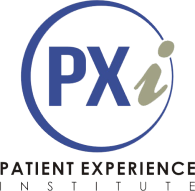Abstract
As an academic researcher, my work-life revolves around testing the efficaciousness of pharmaceutical drugs on the prevention of cardiac dysfunction, arrhythmias, and sudden cardiac death in animal models of heart disease. I never thought I would go from someone studying a life-threatening disease to a patient living with one in twenty-four hours. Yet, that transformation occurred October 8, 2019. I was just appointed to Assistant Professor at Johns Hopkins University School of Medicine (JHUSOM), yet after sitting for my professional headshot I had a grand mal seizure. I cannot recall this event, but I bit the tip of my tongue off, dislocated my right shoulder, and underwent violent contractions. I was rushed to the Emergency Department, thankfully within the same building (JHUSOM). A few scans later, I was told I had ‘a mass’ in my brain that needed to be removed immediately. Fearing the worst, I followed the advice of my newly appointed neurosurgeon and scheduled surgery for October 19, 2019. I had no time to process what had and what was about to happen. What followed was two years of post-surgical recovery during a global pandemic, my own personal awe in the power of medicine, resurgence of my seizures and tumors, and now – my road to recovery through chemotherapy and radiation. These two years have taught me so much about the day-to-day difficulties patients with chronic diseases live with, strategies I use to cope with my new normal, and most importantly, the necessity of caregivers.
Experience Framework
This article is associated with the Patient, Family & Community Engagement lens of The Beryl Institute Experience Framework (https://www.theberylinstitute.org/ExperienceFramework).
- Access other PXJ articles related to this lens.
- Access other resources related to this lens.
Recommended Citation
Chelko SP, Fay DL. Living with brain cancer: From researcher to patient. Patient Experience Journal. 2022; 9(3):8-11. doi: 10.35680/2372-0247.1743.
Creative Commons License

This work is licensed under a Creative Commons Attribution-Noncommercial-No Derivative Works 4.0 License.
Included in
Neoplasms Commons, Nervous System Diseases Commons, Neurology Commons, Neurosciences Commons, Psychiatric and Mental Health Commons


